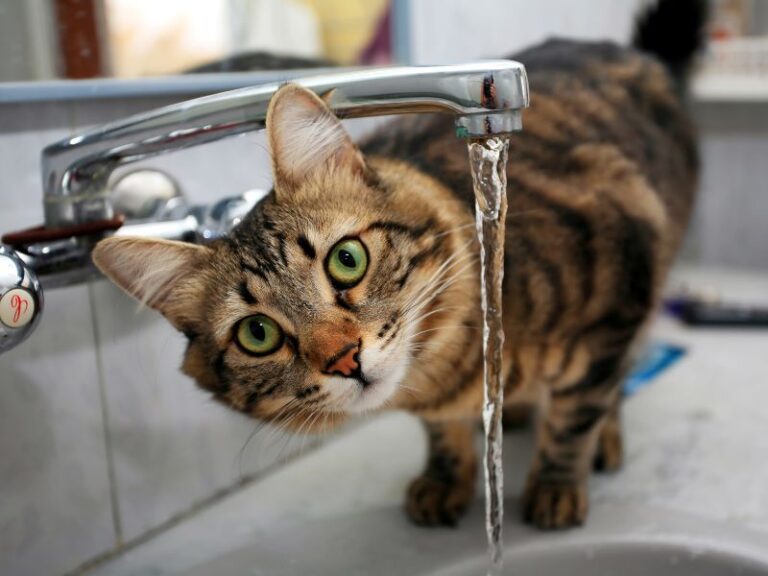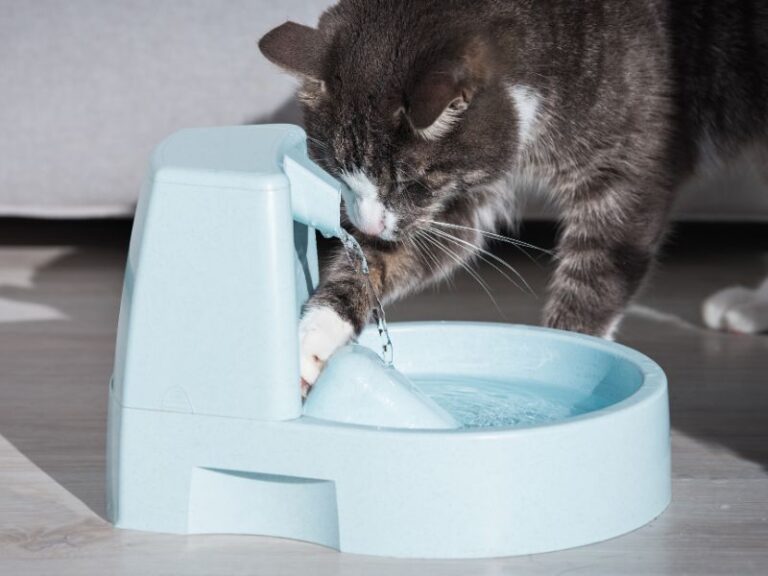Table of Contents
ToggleCats are known for their independence and aloofness, but just like us humans, they can experience a challenging emotion: separation anxiety. In this article, we’ll delve into the fascinating world of cats separation anxiety, shedding light on what it is, how to identify it, and most importantly, how to help your feline friend cope with it.
Our furry companions bring us joy and comfort, but they also rely on us for their physical and emotional needs. Addressing separation anxiety is not just a matter of convenience; it’s vital for your cat’s well-being. Just like humans, unresolved anxiety can lead to a host of behavioral and health issues in our beloved pets.
So, let’s embark on this journey together, armed with knowledge and empathy, to understand and alleviate cats separation anxiety.
Relevant >> Cat Anxiety | How to calm an anxious or stressed cat
Understanding Separation Anxiety in Cats
Anxiety in cats, just like in humans, is a complex and often distressing emotional state. It’s crucial to grasp what separation anxiety entails to effectively help your furry companion.
What Is Separation Anxiety in Cats?
Separation anxiety in cats is a condition where your feline friend experiences heightened stress and unease when separated from their human caregivers. While cats are known for their independence, they are also creatures of habit and attachment. When they become overly dependent on their owners, being left alone can trigger anxiety.
Manifestations of Anxiety in Cats
Recognizing anxiety in cats can be challenging since they can’t communicate their feelings verbally. Instead, they exhibit various behavioral and physical signs. These can include:
- Excessive Meowing: Cats may vocalize excessively, expressing their distress.
- Destructive Behavior: Anxiety can lead to scratching furniture, chewing on objects, or other destructive actions.
- Inappropriate Elimination: Some cats may urinate or defecate outside the litter box when anxious.
- Hiding: Cats may retreat and hide when they’re anxious, making it harder to detect their distress.
- Pacing and Restlessness: Restlessness and constant movement can indicate anxiety.
- Loss of Appetite: Anxiety can affect a cat’s appetite, leading to changes in eating habits.
- Excessive Grooming: Cats may over-groom, leading to hair loss or skin issues.
- Aggression: Anxiety can cause a cat to become more aggressive, especially if they feel threatened.
Recognizing the Symptoms
To effectively address anxiety in your feline companion, it’s crucial to be able to identify the telltale signs and symptoms of this condition. “Symptoms of anxiety in cats” can manifest in various ways, and being aware of these signs will help you provide the right support.
1. Excessive Vocalization:
One common sign of anxiety in cats is excessive meowing or yowling. If your typically quiet cat suddenly becomes talkative when you’re about to leave or when you’re gone, it might be a sign of distress.
2. Destructive Behavior:
Cats dealing with anxiety often resort to destructive actions. They may scratch furniture, chew on cords, or tear apart household items in an attempt to cope with their unease.
3. Changes in Elimination Habits:
“Symptoms of anxiety in cats” can include inappropriate urination or defecation outside the litter box. This behavior is often a manifestation of their stress.
4. Hiding or Isolation:
An anxious cat may seek hiding spots to escape from what they perceive as a threatening environment. They might spend long periods secluded in a closet or under furniture.
5. Excessive Grooming:
Cats may resort to excessive grooming as a self-soothing mechanism. This can lead to hair loss or even skin issues over time.
6. Changes in Appetite:
Anxiety can affect a cat’s eating habits. Some cats may eat less when anxious, while others may overeat.
7. Aggression or Unusual Behavior:
Anxiety can lead to aggression, particularly if your cat feels cornered or threatened. Unusual behavior, such as hissing or growling, might be a clear sign.
Strategies to Help Your Cat
When it comes to addressing “cats separation anxiety,” there are several effective strategies that you, as a cat owner, can implement to provide comfort and support. These strategies can be grouped into key categories, each designed to ease your feline friend’s anxiety:
Creating a Comforting Environment
- Safe Spaces for Solitude: Designate a quiet and secure area where your cat can retreat to when feeling anxious. Include their favorite toys and bedding.
- Interactive Toys: Invest in toys that provide mental stimulation and help combat boredom during your absence.
- Pheromone Diffusers: Consider using pheromone diffusers designed to create a calming atmosphere. These mimic natural feline pheromones and can reduce anxiety.
Gradual Training Techniques for Cats Separation Anxiety
- Desensitization: Gradually expose your cat to your departure cues (e.g., picking up keys or putting on shoes) without actually leaving. This helps them associate these cues with non-threatening situations.
- Short Absences: Start with short departures and gradually increase the time you spend away. Reward your cat when you return to reinforce positive associations.
- Counter-Conditioning: Pair your departure with something positive, like treats or playtime, to change your cat’s perception of your leaving.
- Professional Guidance: Consult with a veterinarian or animal behaviorist experienced in dealing with “cats separation anxiety” for personalized training advice.
Environmental Enrichment
- Vertical Spaces: Cats love to climb and explore. Provide vertical spaces like cat trees or shelves for them to enjoy.
- Interactive Feeders: Use food puzzles or interactive feeders to engage your cat’s mind and make mealtime more exciting.
- Scheduled Playtime: Dedicate time each day for interactive play to strengthen your bond and alleviate stress.
Seeking Professional Help
While many cases of “cats separation anxiety” can be managed effectively with at-home strategies, there are instances where seeking professional assistance is not just advisable, but essential. Here’s when you should consider consulting a veterinarian or an animal behaviorist:
1. Persistent or Severe Symptoms:
If your cat’s anxiety symptoms persist or worsen despite your best efforts with home-based strategies, it’s time to seek professional help. Severe anxiety can have a profound impact on your cat’s quality of life, and early intervention is crucial.
2. New or Sudden Behavioral Changes:
If you notice sudden and unexplained behavioral changes in your cat, such as aggression or excessive fearfulness, it may indicate an underlying issue that requires professional evaluation.
3. Medical Conditions:
Certain medical conditions can mimic the symptoms of anxiety. Conditions like hyperthyroidism or urinary tract infections can affect a cat’s behavior. A veterinarian can rule out these medical causes.
4. Medication Consideration:
In some cases, medication may be necessary to manage “cats separation anxiety.” This should only be prescribed by a qualified veterinarian after a thorough assessment of your cat’s condition.
Finding a Qualified Professional:
When seeking professional help, it’s essential to find a qualified and experienced veterinarian or animal behaviorist. Here’s how you can go about it:
1. Ask for Recommendations: Consult with your regular veterinarian for recommendations. They may be able to refer you to a specialist.
2. Check Credentials: Ensure that the professional you choose is a licensed veterinarian or certified animal behaviorist.
3. Experience Matters: Look for professionals with specific experience in dealing with feline behavior issues, including separation anxiety.
4. Consultation and Evaluation: Schedule an initial consultation where the professional can assess your cat’s condition and provide a tailored treatment plan.
5. Ask Questions: Don’t hesitate to ask questions about their approach to treatment, expected outcomes, and any potential side effects of recommended therapies.
Remember, addressing “cats separation anxiety” may require a combination of professional guidance and at-home strategies. Your cat’s well-being is the priority, and working collaboratively with qualified experts can provide the best outcomes for your furry friend.
Success Stories and Testimonials
Sometimes, the most powerful encouragement comes from real-life stories of cat owners who have faced and triumphed over “cats separation anxiety.” These tales of resilience and success not only provide hope but also illustrate that with patience and dedication, you can make a significant difference in your cat’s life.
The Tale of Luna:
Luna, a timid and anxious feline, used to greet her owner, Sarah, with a chorus of meows every time she prepared to leave for work. Luna’s anxiety escalated to destructive behavior and even self-isolation. Sarah decided to take action.
Through gradual training techniques and the introduction of interactive toys, Luna slowly learned to associate Sarah’s departures with positive experiences. Today, Luna’s anxious meows have turned into contented purrs as she enjoys her alone time.
Leo’s Transformation:
Leo’s separation anxiety manifested as excessive grooming and destructive tendencies. Concerned for Leo’s well-being, his owner, Mark, consulted a veterinarian who recommended environmental enrichment and pheromone diffusers.
By providing Leo with vertical spaces, interactive toys, and a consistent routine, Mark noticed a remarkable change in his cat’s behavior. Leo’s fur began to grow back, and his once anxious demeanor transformed into a confident and happy feline.
These heartwarming success stories demonstrate that with dedication and the right strategies, “cats separation anxiety” can be managed and, in many cases, overcome. It’s a testament to the bond between cats and their owners and the positive impact that understanding and support can have on a feline’s well-being. Your cat, too, can find comfort and peace with the right approach and a dash of patience.
Final Words
In closing, addressing “cats separation anxiety” is not just an act of compassion; it’s a vital step in ensuring your feline friend’s well-being and happiness. To recap the key takeaways from this article:
Understanding the nature of separation anxiety in cats, with its telltale signs and manifestations, empowers you to provide the support your cat needs. Recognizing the “symptoms of anxiety in cats” is the first step toward helping your furry companion.
Equipped with this understanding, you can implement practical strategies to ease your cat’s anxiety. Creating a comforting environment, utilizing gradual training techniques, and providing environmental enrichment can make a world of difference in your cat’s life. Remember to incorporate the main focus keyword, “cats separation anxiety,” into your approach.
However, it’s essential to acknowledge that not all cases can be resolved with home-based strategies alone. Seeking professional help when symptoms persist or worsen is a wise choice. A qualified veterinarian or animal behaviorist can offer guidance tailored to your cat’s specific needs.
Lastly, let these success stories and testimonials inspire hope. Real-life examples demonstrate that with patience, dedication, and the right approach, “cats separation anxiety” can be managed and, in many cases, overcome. Your cat, too, can find comfort and peace.
So, dear reader, as you embark on this journey to help your feline companion, know that you have the tools and knowledge to make a positive impact. Together, we can ensure that our beloved cats lead happier, anxiety-free lives, and that our homes remain filled with the joy and warmth only they can bring.






